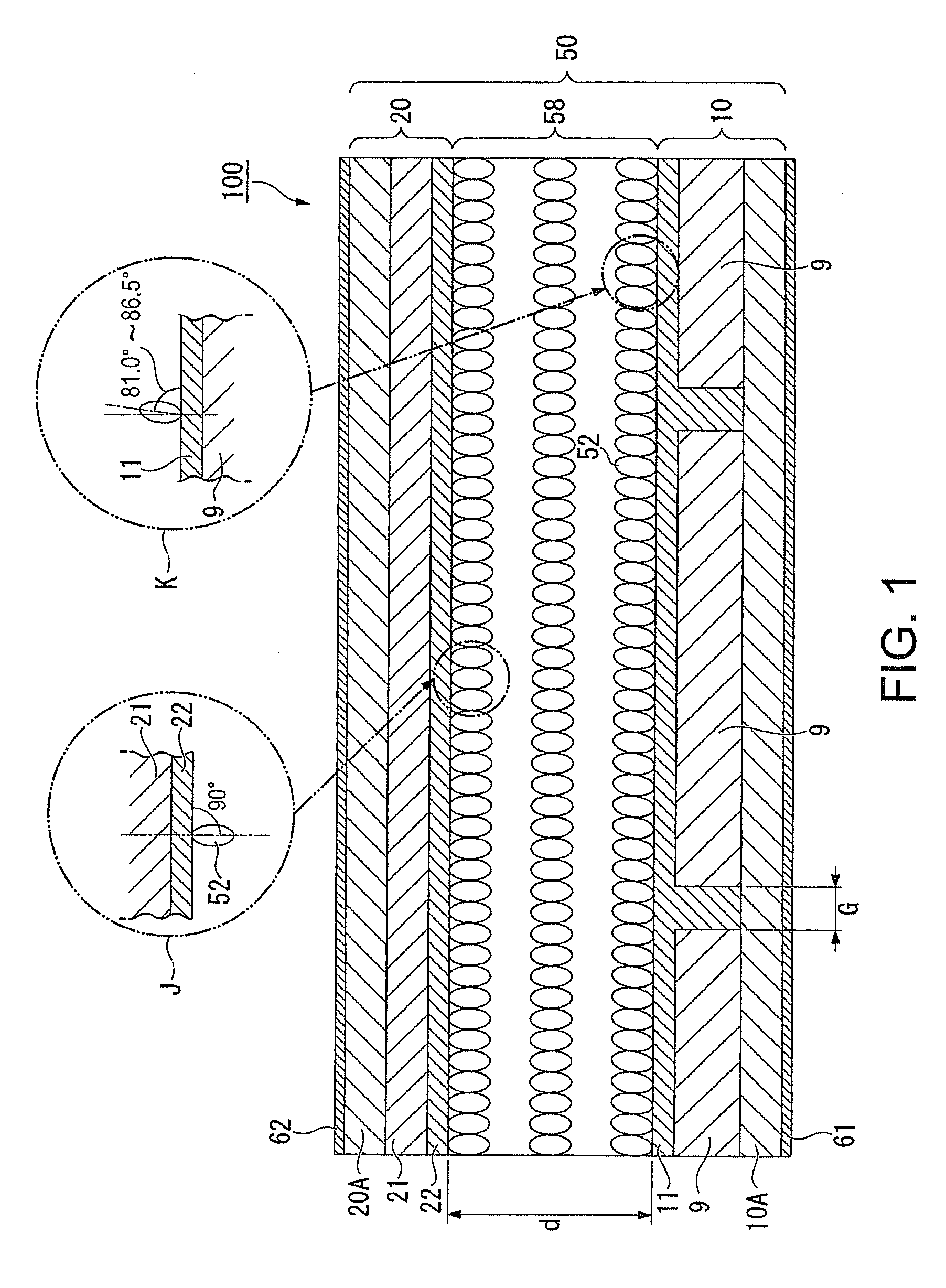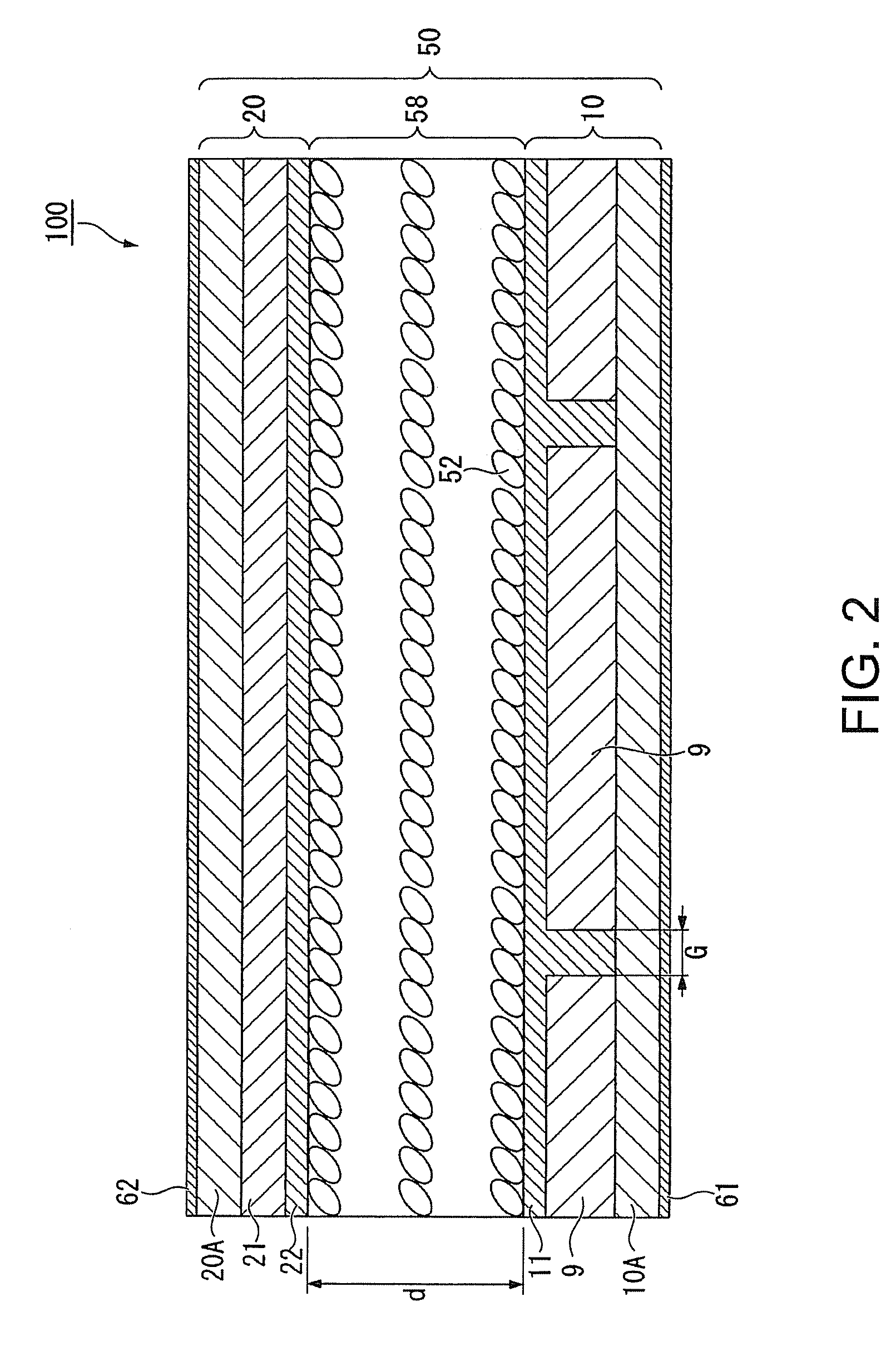Liquid crystal device and electronic apparatus
a liquid crystal device and electronic equipment technology, applied in the direction of chemistry apparatus and processes, instruments, transportation and packaging, etc., can solve the problems of weak interaction between liquid crystal molecules, low transmittance, and small effect of improving contrast, so as to prevent the occurrence of display failure, reduce the cost, and avoid the effect of affecting the contras
- Summary
- Abstract
- Description
- Claims
- Application Information
AI Technical Summary
Benefits of technology
Problems solved by technology
Method used
Image
Examples
example 1
[0045]Pretilt was generated on the circuit substrate 10 by the second alignment layer 11 manufactured using a known method such as oblique evaporation. In this example, a substrate was set in such a manner that the substrate is tilted with respect to an evaporation source by a certain angle θ and then SiO2 was evaporated onto the substrate. The second alignment layer 11 has a function (pretilt) of aligning the liquid crystal molecules 52 at an angle of 82.0° with respect to the substrate surface.
[0046]As for the counter substrate 20, an organic PI material was applied to a surface of the common electrode 21 using a method such as spin-coating or flexography so that the first alignment layer 22 is manufactured. The first alignment layer 22 is intended to align the liquid crystal molecules 52 at an angle of approximately 90° with respect to the substrate surface.
[0047]The circuit substrate 10 and counter substrate 20 manufactured as described above were combined together via a sealant...
PUM
| Property | Measurement | Unit |
|---|---|---|
| pretilt angle | aaaaa | aaaaa |
| size | aaaaa | aaaaa |
| pretilt angle | aaaaa | aaaaa |
Abstract
Description
Claims
Application Information
 Login to View More
Login to View More - R&D
- Intellectual Property
- Life Sciences
- Materials
- Tech Scout
- Unparalleled Data Quality
- Higher Quality Content
- 60% Fewer Hallucinations
Browse by: Latest US Patents, China's latest patents, Technical Efficacy Thesaurus, Application Domain, Technology Topic, Popular Technical Reports.
© 2025 PatSnap. All rights reserved.Legal|Privacy policy|Modern Slavery Act Transparency Statement|Sitemap|About US| Contact US: help@patsnap.com



